Nominations for the F. G. Ciapetta Lectureship in Catalysis are open and nomination packages due on 11 December 2015. The award description and requirements are available at http://nacatsoc.org/awards/ciapetta/.
Author Archives: edrick
Matt Neurock is the recipient of the 2015 Robert Burwell Lectureship in Catalysis
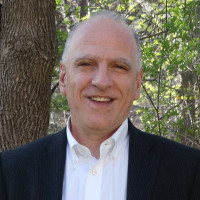 I am pleased to announce that Professor Matthew Neurock of the University of Minnesota is the recipient of the2015 Robert Burwell Lectureship in Catalysis of the North American Catalysis Society, sponsored by Johnson Matthey and administered by The North American Catalysis Society. It is awarded biennially in odd-numbered years. The award consists of a plaque and an honorarium of $5,000. The plaque will be presented during the closing banquet ceremonies at the 2015 North American Meeting of the Catalysis Society. An additional $4,500 is available to cover travelling expenses in North America.
I am pleased to announce that Professor Matthew Neurock of the University of Minnesota is the recipient of the2015 Robert Burwell Lectureship in Catalysis of the North American Catalysis Society, sponsored by Johnson Matthey and administered by The North American Catalysis Society. It is awarded biennially in odd-numbered years. The award consists of a plaque and an honorarium of $5,000. The plaque will be presented during the closing banquet ceremonies at the 2015 North American Meeting of the Catalysis Society. An additional $4,500 is available to cover travelling expenses in North America.
Professor Neurock will present lectures at the local catalysis clubs and societies during the two-year period covered by this award.
The Robert Burwell Lectureship in Catalysis is given in recognition of substantial contributions to one or more areas in the field of catalysis with emphasis on discovery and understanding of catalytic phenomena, catalytic reaction mechanisms and identification and description of catalytic sites and species.
Professor Matthew Neurock is being recognized for his seminal contributions to the development and application of theoretical and computational methods to elucidate catalytic mechanisms and the active sites involved. He has pioneered first-principle kinetic Monte Carlo methods that explicitly track molecular transformations on realistic surfaces at relevant conditions, ab initio molecular dynamics methods that describe complex metal-solution interfaces, and ab initio constant potential methods for electrochemical systems to understand and aid the design of catalytic and electrocatalytic systems.
His group has used these methods, together with ab initio quantum chemical treatments, to explore metals, alloys, oxides, sulfides and zeolites and the mechanisms by which they mediate catalysis. These treatments have uncovered previously unrecognized routes that prevail at the high surface coverages relevant to catalytic practice, the direct participation of protic media as a co-catalyst, and the role of acid-base sites formed by hydroxyl intermediates on metals. His effective collaborations with experimental groups have led to fundamental and practical insights into the mechanisms of alkane activation, Fischer-Tropsch synthesis, selective oxidation and hydrogenation of alkenes and oxygenates, hydrocarbon and oxygenate hydrogenolysis reactions, acid-catalyzed transformations, and electrocatalytic reduction-oxidation cycles.
Enrique Iglesia
President
North American Catalysis Society
Bruce Cook
Vice President
North American Catalysis Society
In Memoriam Presentations
In Memorian slides presented at the North American Meetings since the 19th NAM are available at www.nacatsoc.org/resources/memorials/.
Hajo Freund of the Fritz Haber Institute has been selected as the recipient of the 2015 Michel Boudart Award for the Advancement of Catalysis
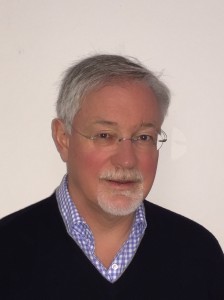 We are pleased to announce that Professor Hans Joachim Freund of the Fritz Haber Institute is the recipient of the 2015 Michel Boudart for the Advancement of Catalysis, sponsored by the Haldor Topsøe Company and administered jointly by the North American Catalysis Society and the European Federation of Catalysis Societies. The Award will be presented at the 24th North American Meeting of the Catalysis Society (Pittsburgh, June 2015) and at Europacat XII (Kazan, Russia, August 2015).
We are pleased to announce that Professor Hans Joachim Freund of the Fritz Haber Institute is the recipient of the 2015 Michel Boudart for the Advancement of Catalysis, sponsored by the Haldor Topsøe Company and administered jointly by the North American Catalysis Society and the European Federation of Catalysis Societies. The Award will be presented at the 24th North American Meeting of the Catalysis Society (Pittsburgh, June 2015) and at Europacat XII (Kazan, Russia, August 2015).
This Award recognizes and encourages individual contributions to the elucidation of the mechanism and active sites involved in catalytic phenomena and to the development of new methods or concepts that advance the understanding and the practice of heterogeneous catalysis. It is meant to recognize individuals who bring together the rigor and the international impact that exemplified the accomplishments and the career of Professor Michel Boudart.
Professor Hajo Freund is being specifically recognized for his groundbreaking experimental advances in understanding elementary steps of reactions on catalytic surfaces and for his studies bridging relevant catalysis and surface reactions at single crystal surfaces through the use of novel model catalysts with well-controlled structural features. His research group has synthesized a broad range of relevant materials, such as oxides of Al, Si, Ce, Ca, and V, useful as active materials or supports, with geometric and electronic structures, including surface defects, probed at the atomic level using tunneling and atomic force microscopy techniques. His work has established the state-of-the-art in new techniques and instrumentation and in the use of relevant model systems to establish mechanistic pathways and structural and electronic requirements in heterogeneous catalysis. One example involves the first implementation of electron spin resonance to single crystals, which has enabled the monitoring of the formation and reactions of radical species derived from adsorbates and metal nanoparticles on well-defined surfaces. His studies of supported metal nanoparticles (Pd, Au) have led to unprecedented insights into how supports influence the geometric and electronic properties and how dopants influence the binding properties of such nanoparticles, even when dopants reside below support surfaces, through dopant-induced polarons that strongly influence oxygen activation. Recently, his group successfully prepared hexagonal SiO2 double layers, which allowed the first direct observation of the atomic structure of amorphous silica using tunneling and atomic force microscopy and the synthesis of a two-dimensional zeolite with bridging hydroxyl structures, such as those present in chabazite frameworks.
Enrique Iglesia
President, North American Catalysis Society
Johannes Lercher
President, European Federation of Catalysis Societies
Christophe COPÉRET is the recipient of the 2015 Paul H. Emmett Award in Fundamental Catalysis
 We are pleased to announce that Professor Christophe COPÉRET of the Department of Chemistry and Applied Biosciences ETH Zürich is the recipient of the 2015 Paul H. Emmett Award in Fundamental Catalysis, sponsored by the Grace Catalyst Technologies operating segment of W.R. Grace & Co. and administered by The North American Catalysis Society. The Award consists of a plaque and an honorarium of $5,000. The plaque will be presented during the closing banquet ceremonies at the 24th NAM meeting in Pittsburgh. Professor COPÉRET will also present a plenary lecture during the conference.
We are pleased to announce that Professor Christophe COPÉRET of the Department of Chemistry and Applied Biosciences ETH Zürich is the recipient of the 2015 Paul H. Emmett Award in Fundamental Catalysis, sponsored by the Grace Catalyst Technologies operating segment of W.R. Grace & Co. and administered by The North American Catalysis Society. The Award consists of a plaque and an honorarium of $5,000. The plaque will be presented during the closing banquet ceremonies at the 24th NAM meeting in Pittsburgh. Professor COPÉRET will also present a plenary lecture during the conference.
The Paul H. Emmett Award in Fundamental Catalysis is given in recognition of substantial individual contributions in the field of catalysis with emphasis on discovery and understanding of catalytic phenomena, proposal of catalytic reaction mechanisms and identification of and description of catalytic sites and species.
The award recognizes the contributions of Professor Christophe COPÉRET to the preparation of well-defined heterogeneous catalysts through a molecular approach based on the controlled functionalization of surfaces and the atomic description of the surface species and active sites, in particular via solid-state NMR spectroscopy. This approach has allowed a detailed understanding of the structure of active sites and of the reaction mechanism of catalytic processes, such as olefin metathesis and polymerization, thereby providing access to structure–activity relationships and to rational catalyst design.
Enrique Iglesia
President, North American Catalysis Society
Bruce R. Cook
Vice President, North American Catalysis Society
In Memoriam: Theodore A. Koch (1925 – 2014)
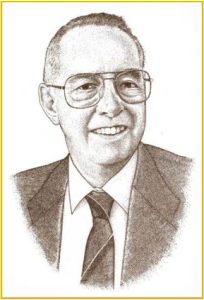 Dr. Theodore A. Koch, 88, a retired DuPont research scientist passed away peacefully at his home in Wilmington, Delaware on September 13, 2014.
Dr. Theodore A. Koch, 88, a retired DuPont research scientist passed away peacefully at his home in Wilmington, Delaware on September 13, 2014.
A native of upstate New York, Koch studied chemistry at St. Michael’s College in Burlington, VT and the University of Pennsylvania in Philadelphia, PA, earning his Ph.D. in chemistry in 1952. He joined the DuPont Co. ultimately retiring from its Nylon business unit as a DuPont Fellow after 48 years of service. An authority on heterogeneous catalysts, Koch spent his entire career developing chemical processes and bringing them from the benchtop to commercialization with marked creativity and tenacity.
Notable technical accomplishments in Koch’s career included developing a new catalyst for nitrous oxide destruction (an ozone-depletion byproduct from Nylon manufacture), development of a new process for hydrogen cyanide manufacture and improvements to many polymer intermediates processes. Koch received the award for Excellence in Catalytic Science and Technology from the Catalysis Club of Philadelphia in 1994 and the Lavoisier Medal for Technical Excellence from the DuPont Co. in 1998. His external roles included adjunct Professor of Chemical Engineering at the University of Delaware; president of the Catalysis Club of Philadelphia; and membership in the North American Catalysis Society, the American Institute of Chemical Engineers, the Organic Reactions Catalysis Society, and the American Chemical Society. He held 29 patents and co-authored 18 journal articles and one textbook on catalysis entitled, “Catalyst Manufacture.”
Koch is survived by his wife of 62 years, Anne, his five children, five grandchildren and extended family. His memory lives on through the Theodore A. Koch Fund that will recognize and reward Delaware Valley achievements in catalysis research. Charitable donations may be made to the Catalysis Club of Philadelphia, Ted Koch Fund, c/o Stephen Harris, Treasurer, Renmatix, 660 Allendale Road, King of Prussia, PA 19406.
Dr. Anne Gaffney is named the recipient of the 2015 Eugene J. Houdry Award of the North American Catalysis Society
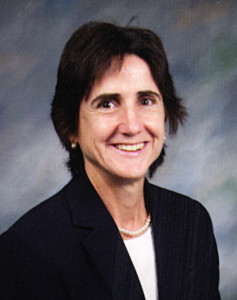 Anne Gaffney is the recipient of the 2015 Eugene J. Houdry Award of the North American Catalysis Society. The Eugene J. Houdry Award in Applied Catalysis is sponsored by Clariant. It is administered by The Catalysis Society and awarded biennially in odd-numbered years. This award recognizes and encourages individual contributions in the field of catalysis with emphasis on the development of new and improved catalysts and processes representing outstanding advances in their useful application. The award consists of a plaque and a prize of $5,000, which will be presented at the 24th North American Meeting of the Catalysis Society to be held in Pittsburgh, Pennsylvania on June 14–19, 2015. The Award Plenary lecture will also be presented during this meeting.
Anne Gaffney is the recipient of the 2015 Eugene J. Houdry Award of the North American Catalysis Society. The Eugene J. Houdry Award in Applied Catalysis is sponsored by Clariant. It is administered by The Catalysis Society and awarded biennially in odd-numbered years. This award recognizes and encourages individual contributions in the field of catalysis with emphasis on the development of new and improved catalysts and processes representing outstanding advances in their useful application. The award consists of a plaque and a prize of $5,000, which will be presented at the 24th North American Meeting of the Catalysis Society to be held in Pittsburgh, Pennsylvania on June 14–19, 2015. The Award Plenary lecture will also be presented during this meeting.
Anne Gaffney is being recognized for outstanding achievements in catalysis as described below: (1) Development of improved rhodium based hydroformylation catalyst for butanediol (BDO) synthesis from propylene oxide; (2) Development of modified zeolite catalyst for Superflex process for conversion of inexpensive HC feeds such as naphtha to valuable light olefins which has been commercialized in 2007; (3) Development of AlkyClean™ process and a new zeolite-based bimetallic catalyst for the alkylation of C3-C5 olefins with isobutane, which has been commercialized in 2013. Her other noteworthy achievements include development of new catalysts based on promoted lanthanide oxides for methane conversion to ethylene by oxidative coupling; invention of a new direct propylene oxide (PO) catalyst for the selective oxidation of propylene with molecular oxygen; development of new catalytic systems for the partial oxidation of methane to syngas at the millisecond contact time; invention of new mixed metal oxide catalysts for the selective oxidation of propane to acrylic acid and the oxidative dehydrogenation of alkanes to olefins.
She received a Ph.D. in physical organic chemistry from University of Delaware in 1981, and a B.A. in chemistry and mathematics from Mount Holyoke College in 1976. Having worked at ARCO, DuPont, Rohm and Haas, and Lummus in various R&D and leadership roles, she has been a most prolific inventor and an author with 233 patent/patent applications and 94 publications (plus 2 book chapters and 2 books edited) as well as 96 presentations or seminars. She has received many awards such as the ACS Award in Industrial Chemistry in 2013, ACS Fellow in 2010, the Tribute to Women in Industry Award in 2007, and the Catalysis Club of Philadelphia Award in 1999.
In Memoriam: Helmut Knözinger (1935–2014)
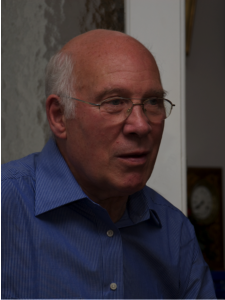 Helmut Knözinger passed away at his home in Munich on January 12, 2014, at age 78. The catalysis community loses an active member of many years, a contributor of outstanding science, leader in various organizations, editor of key publications, and partner in vibrant collaborations.
Helmut Knözinger passed away at his home in Munich on January 12, 2014, at age 78. The catalysis community loses an active member of many years, a contributor of outstanding science, leader in various organizations, editor of key publications, and partner in vibrant collaborations.
Knözinger studied Physics at Ludwig-Maximilians-Universität München, with Physical Chemistry becoming his area of emphasis during his time as a doctoral student. His dissertation (1961), which was supervised by Georg-Maria Schwab, was his entrance into the field of catalysis; he investigated the suitability of the catalytic decomposition of methyl formate as a test reaction. He continued on with the Habilitation (1967), the qualification for professorship within the German academic system (Doctor of Sciences in others). The topic of the associated thesis was the dehydration of ethanol on alumina, a material that would later be the subject of his perhaps most famous article. Knözinger held various academic positions at Ludwig-Maximilians-Universität München, with an interlude as a guest professor at the Universidad Central de Caracas, Venezuela (1968/69), before he arrived at his final rank of professor (1980). He remained true to his alma mater until his official retirement in 2000, after which he kept an office and continued to be active as a researcher and editor.
Knözinger researched in many different areas of catalysis and excelled at developing and applying spectroscopic methods for the characterization of catalysts. Each of the classes of materials in his focus can be associated with methods that he tailored for the purpose of their investigation. He made significant contributions to the characterization of acid-base properties of oxidic materials, analyzing the OH groups spectroscopically, and extensively using carbon monoxide (CO) as a probe but also exploring much sought-for probe molecules for basic surface properties. This work is documented in many original and review articles, including those on alumina in Catalysis Reviews-Science and Engineering in (with Ratnasamy, 1978), on CO adsorption in Materials Chemistry and Physics (with Zaki, 1987), on weakly interacting probes for zeolites in Journal of the Chemical Society — Faraday Transactions (with Huber, 1998), and on acid-base characterization in the Handbook of Heterogeneous Catalysis (2008). Relating to his work on CO as a probe molecule, he also applied his skill in infrared spectroscopy to supported carbonyl complexes, of which he wrote in Angewandte Chemie International Edition (with Lamb and Gates, 1988). Oxides supported on other oxides was another focus area, with applications of the catalysts for example in hydrodesulfurization and selective catalytic reduction. In addition to probe molecule adsorption and IR spectroscopy — his forte, he applied Raman, UV-vis, and photoelectron spectroscopy. To investigate the mechanism of dispersion of oxides on other oxides, experiments to observe the transport were designed, and in a long-lasting collaboration with the Institute for Plasma Physics in Garching (a Max-Planck Institute), thin film model catalysts were investigated by surface science techniques such as ion scattering and Auger electron spectroscopy. Examples of this work are the articles on molybdena supported on alumina in Journal of Physical Chemistry (with Jeziorowski, 1978) or on solid-solid wetting in Surface Science in (with Leyrer, Margraf, and Taglauer, 1988).
Knözinger’s work was recognized with national and international awards, among them the Ciapetta Lectureship (1980), the Ipatieff Lectureship (1988), the Max-Planck Research Award (1995), the Prix Gay Lussac Humboldt Prize (1997), and the Alwin Mittasch Medal of Dechema (1998). He became an honorary member of the Hungarian Academy of Sciences in (1995), a member of the Academia Europaea (2000), and an honorary professor of Nankai University, Tianjin, China (2004). He was a member of chemical and catalysis societies, and helped organize national and international conferences on catalysis. Notably, he was first a member of the European Association of Catalysis and then later the representative of the Federal Republic of Germany in the Council of the European Federation of Catalysis Societies (1993–1999). He also acted as president of the International Association of Catalysis Societies (1996–2000).
As editor, Knözinger moved into the footsteps of Schwab, who had edited a handbook of catalysis. Together with Ertl and Weitkamp, Knözinger published the first edition of the Handbook of Heterogeneous Catalysis with five volumes in 1997. Such was the success that a second edition, with Schüth as additional editor and eight volumes, appeared in 2008. He served as an editor of Advances in Catalysis, in the years 1998 through 2011; under his reign, three volumes were dedicated to spectroscopic analysis of the working catalyst.
While Knözinger remained rooted in Munich throughout his career, he cultivated collaborations and exchange. He himself was an avid traveler and also a guest professor multiple times, in Caracas, Xianmen, Evanston, Amsterdam, and Paris. Researchers from around the world visited his laboratory (their provenience was, in fact, tracked by pins in a wall map at the institute), mostly to perform IR spectroscopic experiments using his specially designed apparatus. Guests were treated with graciousness and enjoyed Bavarian hospitality.
His constant interest in everybody’s research was manifest in his daily afternoon rounds through the labs with individual conversations, his reception of a knock at his office door, his overnight reading of manuscripts handed to him. His reliability and his self-discipline were exemplary. His advising was never forceful, promoting academic freedom and independence. A significant number of students achieved the doctoral degree under his guidance and are testament to his skill as an advisor and mentor. Knözinger was a gifted athlete in his youth and a mountain enthusiast; he instigated regular group outings – hiking in summer and skiing in winter. He created an atmosphere of togetherness that let team spirit and humor flourish and friendships be forged.
Knözinger was also a talented photographer and adhered to this passion throughout his life – his camera accompanied him on most occasions. The various photographs displayed in his office spoke of his skill, of his travels around the world, and his eye as an observer.
Helmut Knözinger’s presence and his views will be missed.
Friederike Jentoft
In Memoriam: George Donald Blyholder (1931–2013)
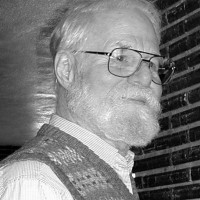 George Donald Blyholder was born January 10, 1931 in Elizabeth, New Jersey but he grew up in Kansas City, Kansas and Chicago, Illinois. He received his BA from Valparaiso U., his BS from Purdue U. in chemical engineering and a Ph.D. in chemistry from the University of Utah. His thesis was entitled “Kinetics of Graphite Oxidation” and a part of this was published with his advisor, the renowned kinetist Henry Erying. While a graduate student, he met and married Betty Sue Conrad. Following graduation, he did postdoctoral studies at the University of Minnesota and then at The Johns Hopkins University with Prof. Paul H. Emmett. His work with Emmett involved the use of C‑14 labeled ketene to study the Fischer-Tropsch reaction mechanism. In 1959, he moved to Fayetteville, Arkansas as a professor of chemistry at the University of Arkansas. There he was involved in pioneering research on the use of infrared spectroscopy to study catalysis. His publication “Molecular orbital view of chemisorbed carbon monoxide” in the Journal of Physical Chemistry in 1964 has become a classic publication with 719 citations and probably more where it is just referred to as the “Blyholder Model”. He retired in 1996, becoming an emeritus professor. He published more than 100 articles in scientific journals with most in the area of surface science. His death at age 82 was on Feburary 24, 2013.
George Donald Blyholder was born January 10, 1931 in Elizabeth, New Jersey but he grew up in Kansas City, Kansas and Chicago, Illinois. He received his BA from Valparaiso U., his BS from Purdue U. in chemical engineering and a Ph.D. in chemistry from the University of Utah. His thesis was entitled “Kinetics of Graphite Oxidation” and a part of this was published with his advisor, the renowned kinetist Henry Erying. While a graduate student, he met and married Betty Sue Conrad. Following graduation, he did postdoctoral studies at the University of Minnesota and then at The Johns Hopkins University with Prof. Paul H. Emmett. His work with Emmett involved the use of C‑14 labeled ketene to study the Fischer-Tropsch reaction mechanism. In 1959, he moved to Fayetteville, Arkansas as a professor of chemistry at the University of Arkansas. There he was involved in pioneering research on the use of infrared spectroscopy to study catalysis. His publication “Molecular orbital view of chemisorbed carbon monoxide” in the Journal of Physical Chemistry in 1964 has become a classic publication with 719 citations and probably more where it is just referred to as the “Blyholder Model”. He retired in 1996, becoming an emeritus professor. He published more than 100 articles in scientific journals with most in the area of surface science. His death at age 82 was on Feburary 24, 2013.
Election of Officers for the Southwest Catalysis Society
Officer elections for the Southwest Catalysis Society open on August 4 and will close August 25. There are elections for Chair-elect, Directors (2), Secretary and Treasurer. SWCS members will be receiving an email with the link to the ballot.
Link to candidate statements: 2014 SWCS Candidate Statements.